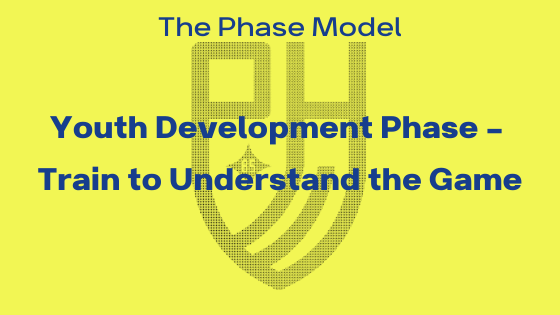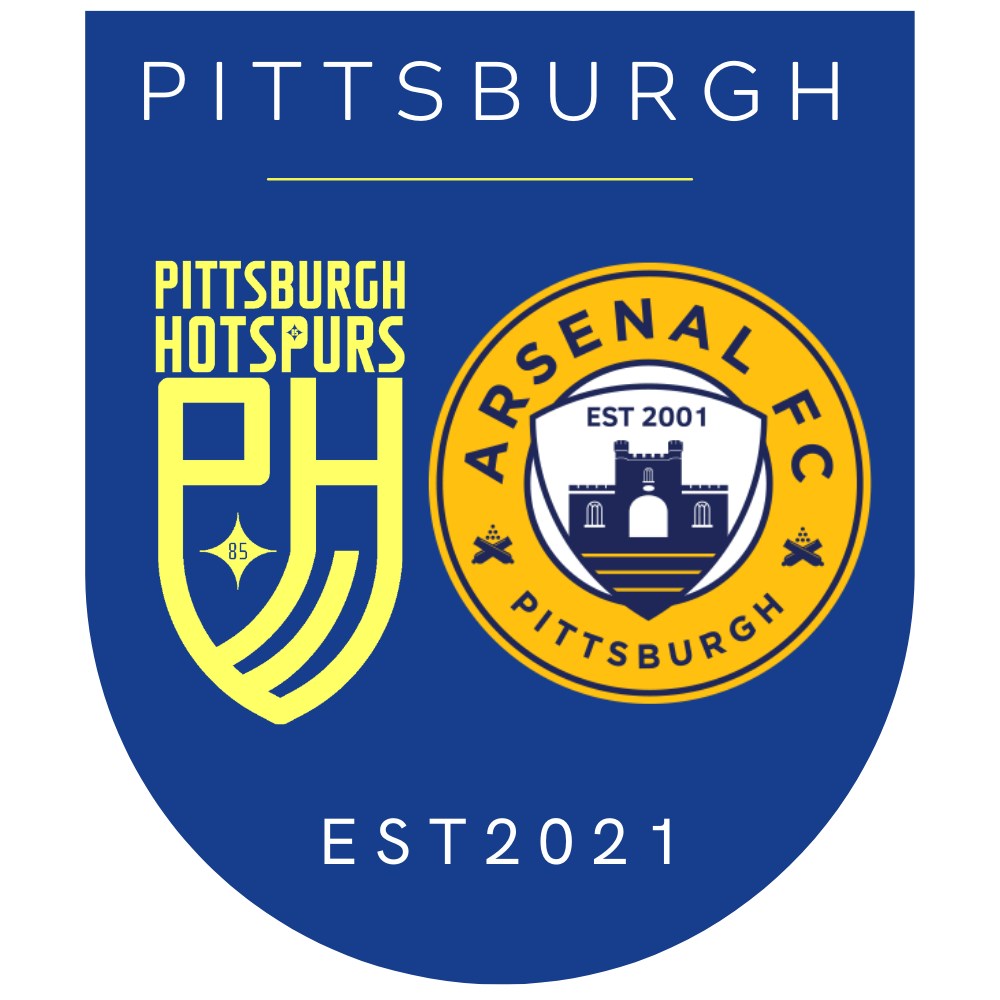The Phase Model: Youth Development Phase – Train to Understand the Game

In the Youth Development Phase (YDP), we see kids who are going through the biggest period of ‘change’ that they will experience. Physical, cognitive, and emotional maturity plays a huge part in terms of soccer development. It’s our role in the YDP to help players navigate this.
In a soccer sense, players at U13 move to the full format of the game, creating new challenges and opportunities for players.
As a club, we focus on long term player development. Within sports training, there is a specific model that applies.
The Long Term Athlete Development (LTAD) model is a framework based on the Japanese concept of ‘Kaizen’ meaning ‘improvement’ or ‘change for the better.’ National governing bodies around the world, covering multiple sports lean towards this model when considering the way an athlete should approach their sporting journey. The framework provides scientifically proven guidelines as to how we should train athletes based on their age and stage of development, taking advantage of ‘windows of trainability’.
With a focus on training to understand the game for our 13-15-year-old players, here’s how we go about that in the YDP.
Youth Development Phase Focus
In the Youth Development Phase, the athletes will reach Peak Height Velocity (PHV) which greatly impacts the athlete’s ability to improve physical components such as speed, strength, and stamina.
Furthermore, these 12-15-year-old athletes are in the latter stages of their window to train fundamental movement skills and post-PHV, this window closes. Therefore, the time spent in the YDP is vital for solidifying a player’s skillset and in many cases, re-insulating neural pathways to reestablish skills during puberty.
It’s important for players and parents to know and understand the LTAD and how it affects the way we train and play. For example, players should be exposed to as many different situations and challenges as possible to learn as many technical skills as possible. To develop into top players, it’s essential to place a heavy emphasis on these technical skills still, understanding that the bigger picture (team tactics and strategies to win games) are developed during the next stages (CPP). Rather than training to compete or training to win, YDP has athletes training with the intention of being the best that they can be!
Training Focuses for the Youth Development Phase
As players progress from the Foundation Phase (FP) to the Youth Development Phase, the training sessions become increasingly more focused on tactical aspects of the game. Here is a breakdown of what players can expect their training structure to look like:
U13&14
Technical- 50%
Tactical- 30%
Physical- 10%
Psychosocial- 10%
U15
Technical- 35%
Tactical- 35%
Physical- 20%
Psychosocial- 10%
The reason for the decline in technical focus does not mean that technical aspects of the game become less relevant, quite the opposite actually! At U13, players make the jump to the 11v11 game, so they need to focus more on tactical aspects of the game because a bigger space with more players presents more complex problems to solve, thus resulting in players spending more time each game making decisions off the ball.
It is expected that the players coming into the YDP from our FP are already capable of executing the basic techniques necessary to play the game. The main difference between the training at the FP and the YDP is at U8-U12, the focus is mostly on the “what” (dribbling, passing, shooting, etc.), then once they’re in the YDP we delve more into the “why,” “where,” and “when” of these skills.
Regardless of what the focus of the session is each week, we always try to structure training activities so that it looks as much like the actual game as possible. This means adding pressure whenever possible and utilizing a variety of small-sided games and rondos.
Small-sided games can be any game played with less than 11 players on each team. The incorporation of these small-sided games into our training environment allows us to recreate moments within the game that will help us to improve our players tactical understanding, decision making, and overall development, while also keeping them constantly engaged by giving them more opportunities to get touches on the ball and to be involved in the play.
Rondos are a training game in which the team in possession has numerical superiority over the team out of possession. The objective is for the attacking team to maintain possession of the ball, while the defenders try to win the ball back.
Utilizing rondos gives our players the chance to work on their technique, decision making, problem-solving, tactical knowledge (rondos happen all over the field during games!), and creativity, all within a competitive setting. Rondos are incredibly versatile training tools and can be manipulated in an infinite number of ways based on the level of the players, what the training topic is, and what we’re trying to achieve with the activity.
With each Hotspurs team in the YDP training two nights per week, the first training session of the week is set up for one team, training in a space that allows us to end our session with 7v7 or 8v8. The second training session of the week is set up for two teams to train at the same time on a full pitch, allowing us to end our session with 11v11.
Player-coach Relationship
Pittsburgh Hotspurs is a player-centric club, meaning that all of the decisions we make are to benefit each individual player and their development. Over time, this will develop great players, teammates, and teams.
One way we help empower our players to take responsibility for their training and their development is by creating an environment that has the right balance of fun and discipline, with the understanding that we must cultivate a love for the game above all else.
The greatest players in the world are the best decision-makers. Soccer is a fluid game where players are constantly experiencing new situations and facing new problems that need to be solved. With this in mind, our coaching style is predominantly a mixture of guided discovery and questions and answers. This means instead of always giving players the answer or telling them what to do (autocratic), we are encouraging them, as well as providing varying levels of guidance, so that they can work out the answer for themselves. This coaching style develops a deeper understanding of the game and creates more well-rounded players.
—
We are believers that there’s no “right” way to play the game. There are loads of different styles of play, all of which can be effective if coached properly. However, having a set style of play that our whole club utilizes allows us to keep the focus on the long term development of our players. This consistency enables our coaching staff to layer on new ideas each year, and throughout each phase, relative to the players’ age and learning ability. Our goal is for all of our players to reach whatever they want their highest level to be.
Our style of play promotes creativity, decision making, discipline and creates game savvy players. This helps our players to be more versatile (we try to develop all players in a primary and at least one secondary position as well) and allows them to adapt to different styles that as they enter high school, go through our College Prep Phase (CPP), and onto college, they’ll continue to be successful in the game they love.
Make sure to read:
- The Phase Model: Why It’s The Hotspurs Way
- The Foundation Phase – Train to Love the Game
- The College Prep Phase – Train to Win the Game
- The Hotspurs Way: The Goalkeeping Model
